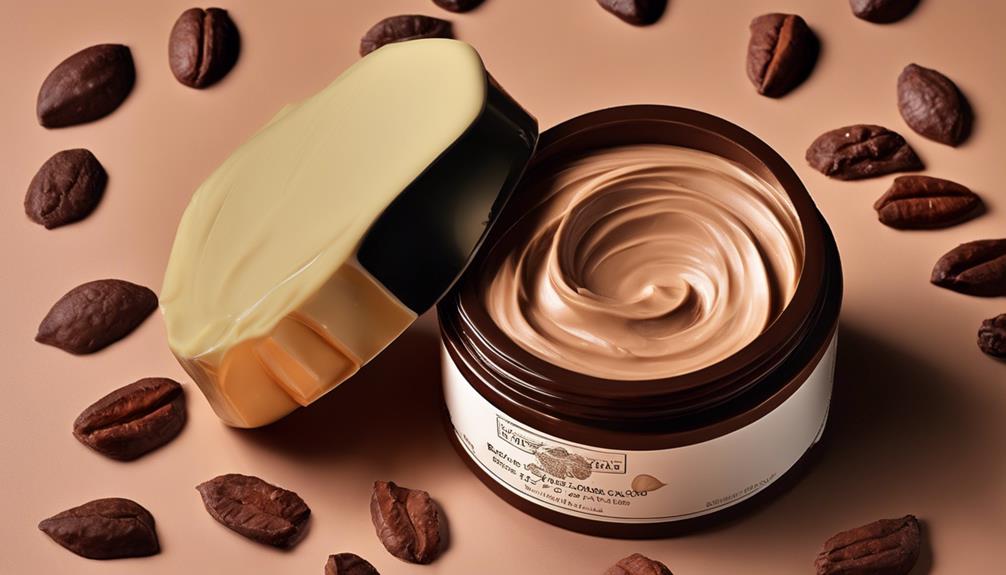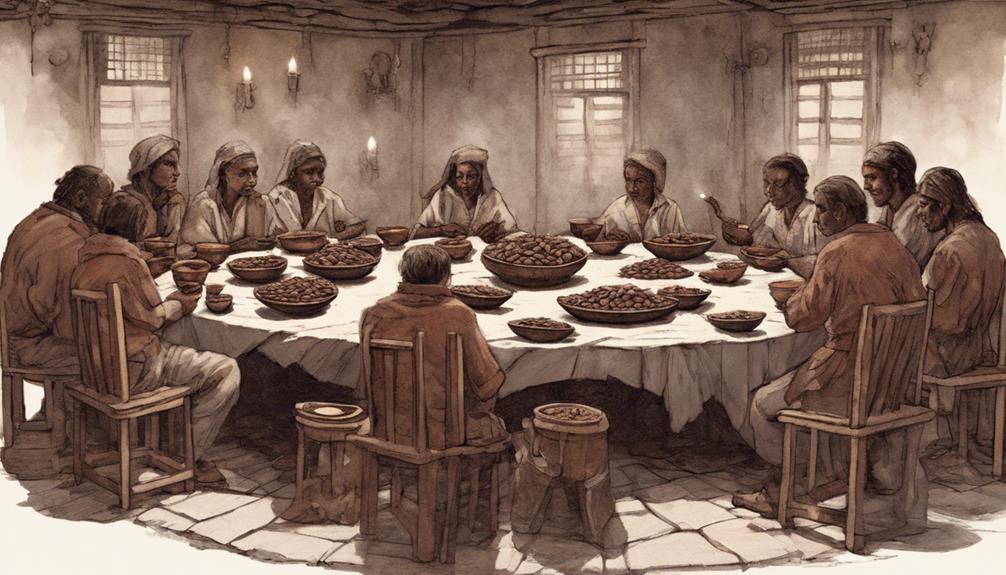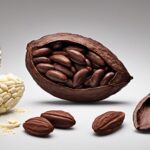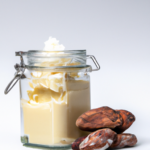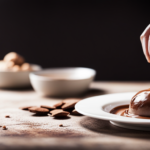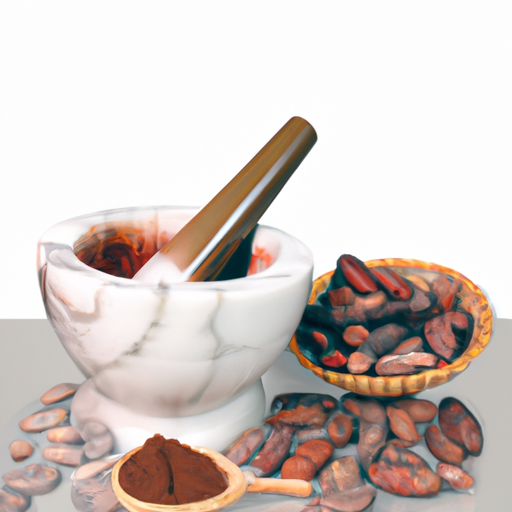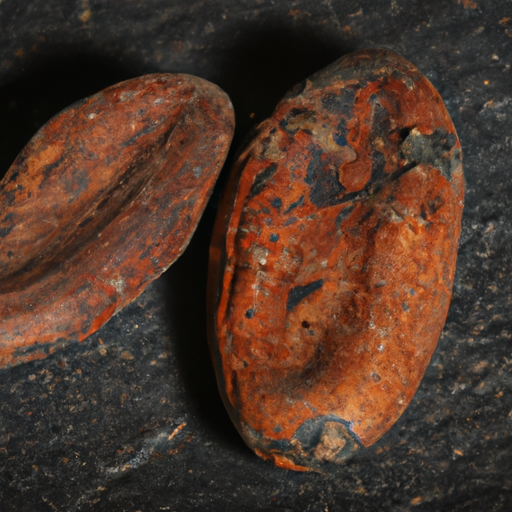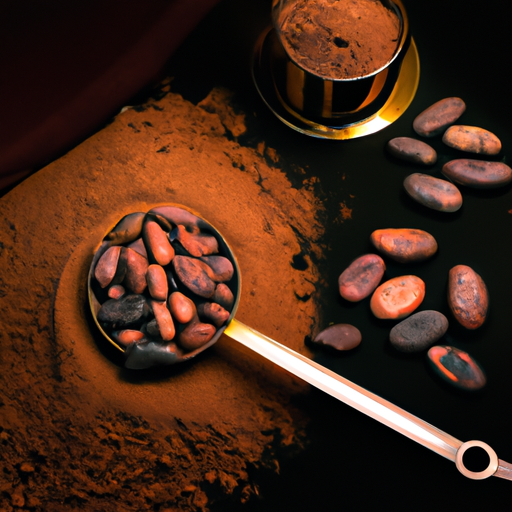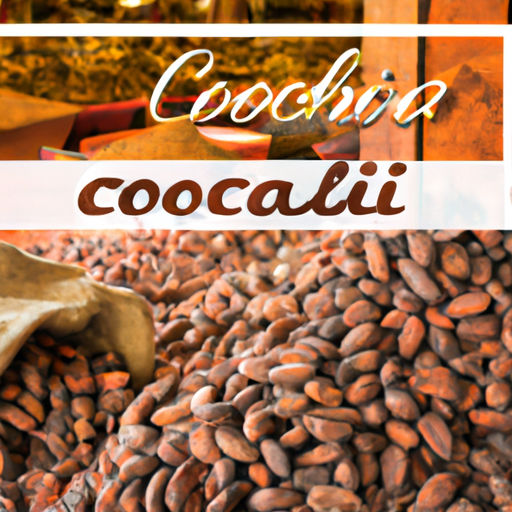I love using cocoa butter for its amazing benefits! Not only does it deeply moisturize and nourish my skin with its rich fatty acids and vitamin E, but it also helps improve skin elasticity and soothe dry patches. The antioxidants and vitamin E in cocoa butter also provide anti-aging benefits, reducing wrinkles and increasing collagen production. It is excellent for treating skin conditions like eczema and psoriasis, as well as for fading scars and preventing stretch marks. With its natural ingredients and versatility, cocoa butter is a essential addition to skincare routines. Discover how cocoa butter can greatly impact your skin health and overall well-being.
Key Takeaways
- Deeply moisturizes and nourishes skin with rich fatty acids and vitamin E.
- Offers anti-aging properties, reducing wrinkles, age spots, and improving skin elasticity.
- Helps with skin conditions like eczema and psoriasis, soothing irritation and improving elasticity.
- Fades scars and prevents stretch marks, aiding in skin repair and elasticity.
- Contains natural ingredients, rich in antioxidants, polyphenols, and healthy fatty acids for skin health.
Skin Moisturization
Cocoa butter deeply moisturizes and nourishes the skin with its rich fatty acids content. This natural ingredient is like a tall glass of water for your skin, helping to deeply moisturize and nourish it from within.
The presence of vitamin E in cocoa butter not only helps maintain skin moisture levels but also works wonders in improving skin elasticity. By regularly applying cocoa butter, you can promote a smooth texture and say goodbye to dry, flaky skin.
Its emollient properties act as a soothing balm, especially for rough patches and dry areas on your skin. Think of cocoa butter as a gentle, yet powerful, natural remedy that provides long-lasting hydration and helps to soothe those troublesome areas.
Embrace the feeling of soft, supple skin as cocoa butter works its magic, leaving you feeling moisturized, pampered, and radiant.
Anti-Aging Properties
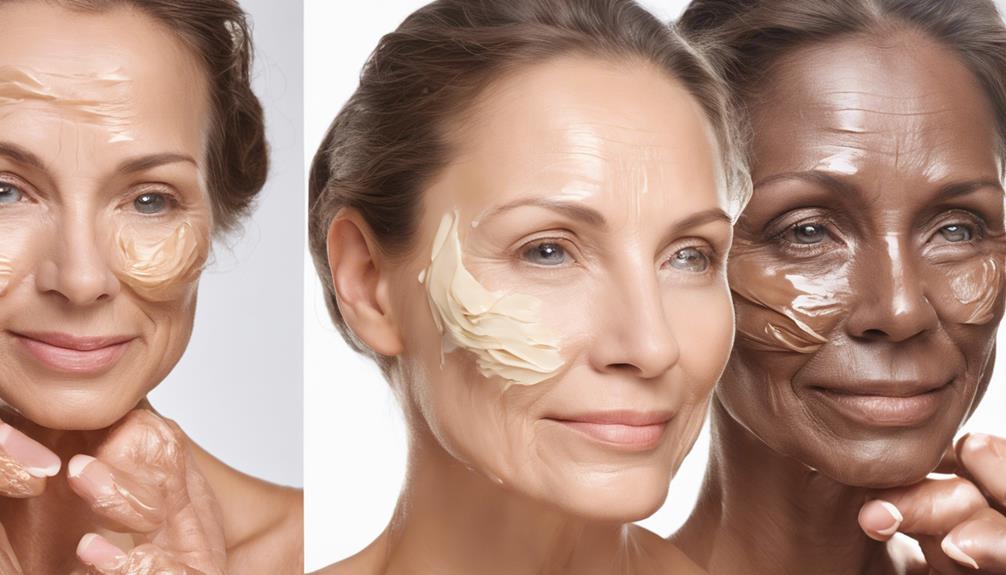
With its potent antioxidants and high vitamin E content, Beurre de Cacao offers effective anti-aging properties that combat signs of aging by reducing free radicals.
Cocoa Butter, as it's commonly known, contains nourishing elements that deeply hydrate the skin, aiding in the reduction of age spots and improving skin tone.
The anti-inflammatory properties of Beurre de Cacao help soothe skin irritations and redness, contributing to a more youthful appearance.
Additionally, the high concentration of vitamin E in Beurre de Cacao assists in enhancing skin elasticity, diminishing the visibility of wrinkles and fine lines.
Regular use of Beurre de Cacao can also stimulate collagen production, resulting in firmer and smoother skin texture.
Embrace the power of Beurre de Cacao to maintain a radiant and youthful complexion, harnessing its anti-aging benefits for a revitalized appearance.
Skin Condition Relief
Soothing and hydrating, cocoa butter offers relief for various skin conditions such as eczema and psoriasis due to its moisturizing properties. Cocoa butter's ability to deeply penetrate the skin helps in locking in moisture, reducing dryness, and soothing irritation. The vitamin E present in cocoa butter plays an essential role in protecting the skin from damage, supporting overall skin health. By improving skin elasticity, cocoa butter aids in maintaining skin health and resilience, especially in individuals with eczema and psoriasis.
Regular application of cocoa butter can assist in reducing inflammation, itchiness, and redness associated with these skin conditions, providing much-needed relief and comfort. Its nourishing and hydrating properties make it an excellent choice for addressing skin concerns while maintaining healthy skin. Incorporating cocoa butter into your skincare routine can help alleviate the symptoms of eczema and psoriasis, promoting smoother and more comfortable skin.
Scar and Stretch Mark Help
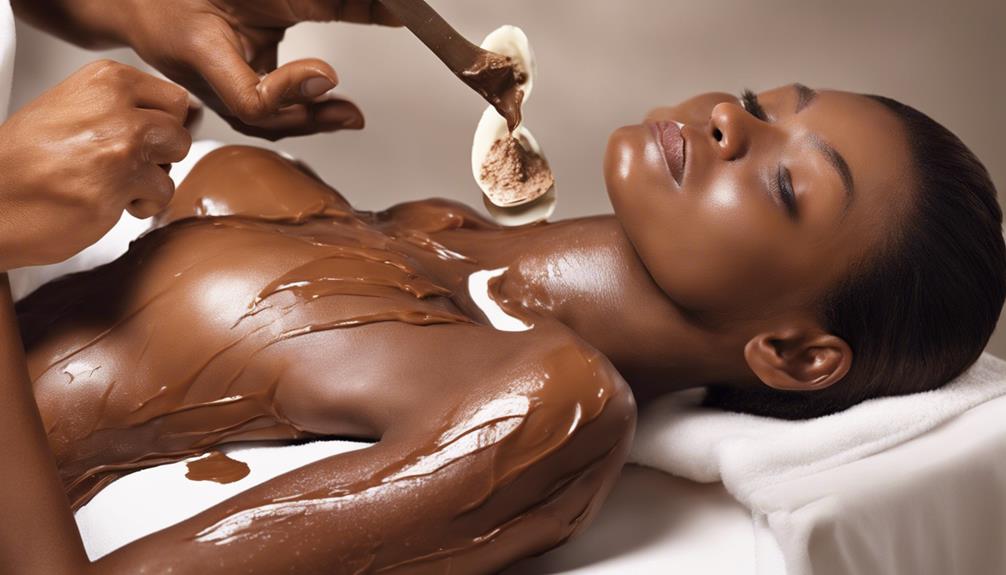
Cocoa butter is known to fade scars naturally and can prevent the development of stretch marks when applied regularly. Its hydrating properties help improve skin elasticity, making existing stretch marks less noticeable over time.
Fades Scars Naturally
Utilizing the rich content of fatty acids and antioxidants in Beurre de Cacao can naturally aid in fading scars and reducing the appearance of stretch marks.
- The moisturizing properties of Beurre de Cacao improve skin elasticity.
- Regular application can diminish the visibility of scars over time.
- Beurre de Cacao's collagen-boosting compounds contribute to skin repair.
- It's a natural remedy for promoting skin regeneration.
- The nourishing effects help fade scars and diminish stretch marks.
Prevents Stretch Marks
To prevent the formation of stretch marks, consistent application of cocoa butter is key for maintaining skin elasticity and promoting collagen production. Cocoa butter hydrates the skin, keeping it supple and nourished, which aids in reducing the appearance of stretch marks.
This natural ingredient also helps soothe irritated skin, promoting healing and supporting skin repair processes. By using cocoa butter regularly, you can't only prevent new stretch marks from forming but also contribute to improving the texture of existing ones.
The combination of hydration, elasticity maintenance, and collagen production makes cocoa butter an effective ally in the battle against stretch marks, leading to smoother and more even skin over time.
Improves Skin Elasticity
Improving skin elasticity can be effectively achieved through consistent application of Beurre de Cacao, aiding in scar and stretch mark care. Beurre de Cacao, also known as cocoa butter, deeply hydrates and nourishes the skin, diminishing the appearance of scars and stretch marks over time.
The fatty acids present in cocoa butter play an essential role in promoting collagen production, which enhances skin firmness. Regularly using Beurre de Cacao can also help prevent the formation of new stretch marks.
Its moisturizing properties not only improve skin elasticity but also maintain it, making it a valuable option for scar and stretch mark care.
Natural Ingredients
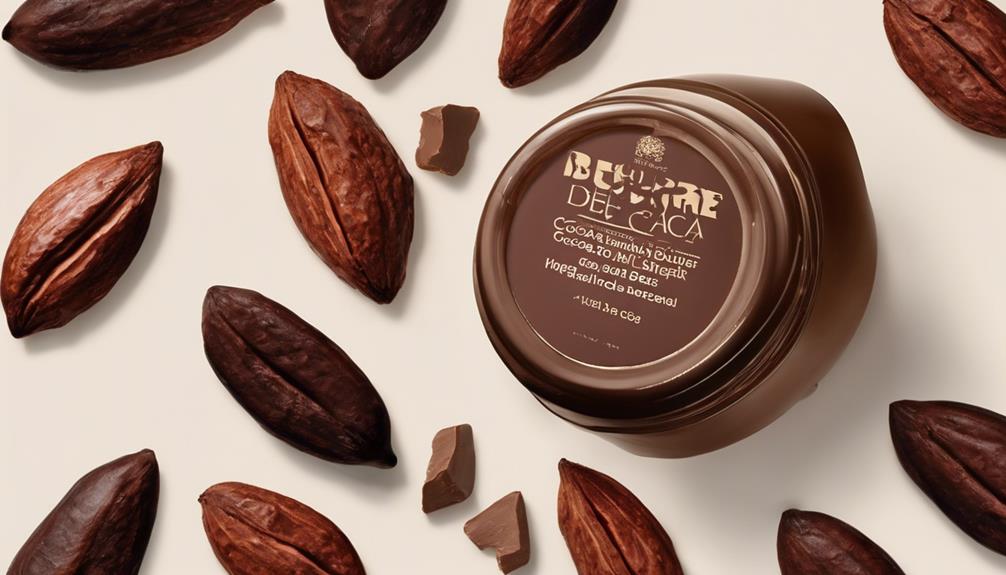
Cocoa butter is packed with pure cocoa goodness that provides nourishing benefits for the skin. Its natural ingredients contain essential nutrients like vitamin E, which can help improve skin elasticity and hydration.
This versatile beauty ingredient is a vegan-friendly option for those seeking plant-based skincare solutions.
Pure Cocoa Goodness
Derived from cocoa beans, Beurre de Cacao boasts a remarkable purity and richness that elevates its skincare benefits. Here are some key points to help you understand the pure cocoa goodness found in Beurre de Cacao:
- Rich in antioxidants, polyphenols, and healthy fatty acids for skin nourishment.
- Helps protect the skin from UV damage and improves blood flow.
- Offers a smooth texture that feels luxurious on the skin.
- Delivers a mild chocolate fragrance, adding a delightful touch to skincare products.
- A versatile ingredient that effectively hydrates, soothes, and rejuvenates the skin.
Nourishing Skin Benefits
Nourishing the skin with natural ingredients is essential for maintaining its health and vigor. Cocoa butter, rich in fatty acids, deeply hydrates the skin, improving elasticity and aiding in the prevention and reduction of stretch marks.
Packed with antioxidants, cocoa butter shields the skin from free radical damage, combating premature aging. Its smooth texture makes it an excellent moisturizer, especially for dry lips.
Regular use of cocoa butter can also soothe skin irritations like burns, rashes, and infections, promoting overall skin health. Incorporating cocoa butter into your skincare routine can provide lasting hydration, protection, and nourishment, keeping your skin supple and radiant.
Versatile Beauty Ingredient
With its diverse array of beneficial properties, cocoa butter stands out as a versatile beauty ingredient in natural skincare routines.
- Cocoa butter is rich in antioxidants and vitamin E, making it ideal for nourishing and protecting the skin.
- It's used in various skincare products like lotions, creams, and lip balms for its hydrating benefits.
- Incorporating cocoa butter into your skincare routine can help improve skin elasticity over time.
- This natural ingredient can also reduce the appearance of scars, wrinkles, and stretch marks.
- Due to its soothing and calming effects on the skin, cocoa butter is a popular choice for those seeking natural skincare solutions.
Versatile Usage
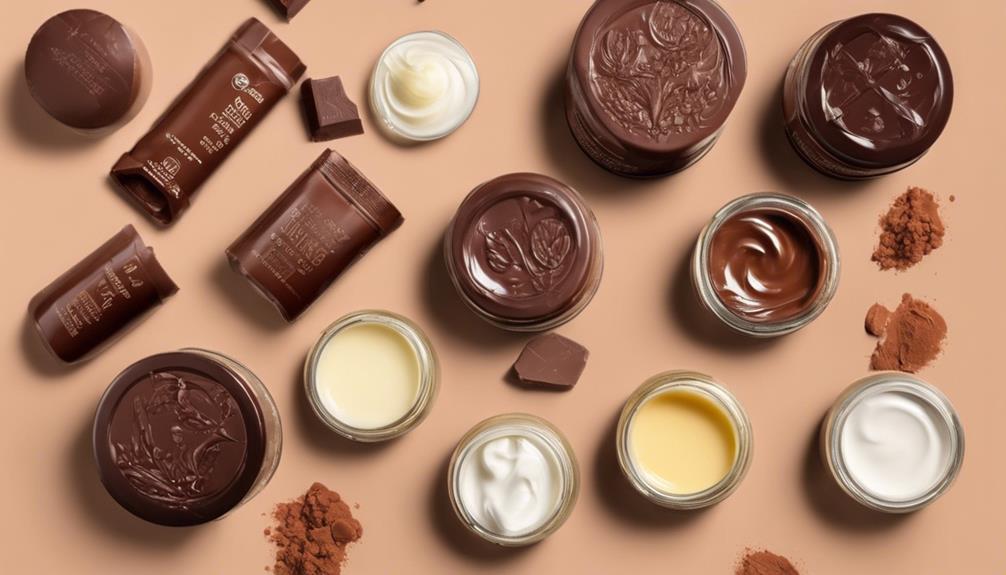
I find that the versatility of Beurre de Cacao extends beyond just one specific purpose, making it a valuable ingredient in various applications.
This cocoa butter derivative isn't just for skincare and beauty products; it can also be used in confectionery. Its natural moisturizing properties make it an excellent choice for dry skin and lips, thanks to the antioxidants that help improve skin elasticity.
Whether you're looking to create your own natural moisturizer or add a touch of luxury to your homemade chocolates, Beurre de Cacao is the key ingredient to explore.
The smooth texture and mild fragrance of this cocoa butter make it a delightful addition to cosmetics and personal care products. So, the next time you're exploring different ways to incorporate Beurre de Cacao into your routine, remember its versatility and the wide range of benefits it can offer.
Frequently Asked Questions
What Is Cocoa Butter Best For?
Cocoa butter is best for moisturizing and protecting the skin with its antioxidants. It soothes dry lips, improves elasticity, and helps with scars and stretch marks. Additionally, it can calm burns, rashes, and infections, nourishing the skin deeply.
What Are 5 Health Benefits of Cocoa?
Feeling like a radiant sunrise, cocoa's antioxidants combat free radicals, aiding skin elasticity, scar reduction, and anti-inflammatory healing. Its fatty acids and vitamins nourish, soothe, and shield skin, a natural hug for health.
Is 100% Cocoa Butter Good for Skin?
Yes, 100% cocoa butter is fantastic for the skin. It deeply hydrates and nourishes, helps protect against premature aging, improves elasticity, and can reduce scars and wrinkles. Regular use can create smoother, more radiant skin.
Is Cocoa Butter Good for Your Face Everyday?
Absolutely, cocoa butter is fantastic for my face every day. It keeps my skin hydrated, protected, and radiant. The antioxidants combat aging, while its soothing properties calm any irritation. My skin feels nourished, rejuvenated, and oh so soft.
Can Cocoa Butter Provide the Same Benefits as Cocoa with Caffeine?
Cocoa caffeine content explained: While cocoa butter and cocoa with caffeine are derived from the same source, they offer different benefits. Cocoa butter is rich in fatty acids and known for its moisturizing properties, while cocoa with caffeine is prized for its stimulant and antioxidant effects. Both have their own unique advantages.
Conclusion
To sum up, cocoa butter offers a multitude of benefits for your skin. From moisturization and anti-aging properties to relief for skin conditions and help with scars and stretch marks, this natural ingredient is versatile and effective.
Incorporating cocoa butter into your skincare routine can help improve the overall health and appearance of your skin. So why wait? Start reaping the rewards of cocoa butter today for healthy, glowing skin.

